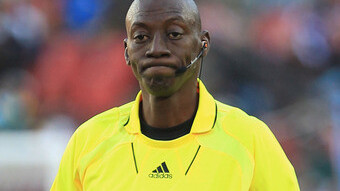
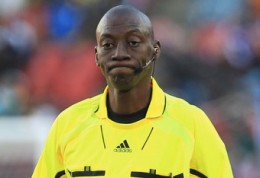 Every World Cup runs into the problem of poor officiating, and after the absolutely baffling decisions made in Friday’s games, it appears that this year is no different.
Every World Cup runs into the problem of poor officiating, and after the absolutely baffling decisions made in Friday’s games, it appears that this year is no different.
This complaint takes different forms every time. Sometimes, people clamor for instant replay to be introduced. Other times, the complaint takes the form of suggestions for higher-tech equipment. What most people agree on, however, is that it’s faintly absurd that human error by the match officials still plays such a huge role in determining the outcome of a game.
Here at TheNextWeb, we’ve been watching the World Cup with baited breath and here is what we think should be done.
Instant Replay: The Wrong Way Forward
Instant replay has been implemented in many other sports already. However, football poses an interesting case for its implementation. While it has worked quite well in sports like American football and basketball, which feature frequent stoppages of play and limited situations for its use, implementing it in football would be a challenging proposition to say the least.
It’s relatively easy to poke holes in the best arguments for instant replay in football. Its proponents claim that the sport could easily implement a NFL-style challenges system, where each team receives two chances to stop play for an instant replay ruling on the legality of the call in question.
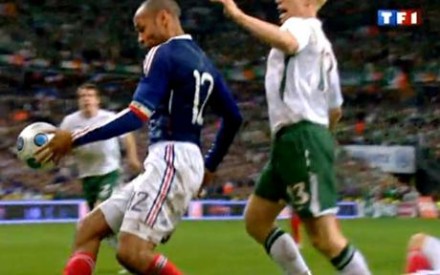
Sports Illustrated (an American sports magazine), in particular, was a proponent of this system (for cases like the one shown above). They advocated for two challenges per team for a maximum of 60 seconds of review time for each challenge.
However, as is often the case with such calls, there’s a whole host of questions. What calls are valid to be challenged? Can you overturn an offsides call? If you do, what happens when the “offsides” player breaks through on goal and scores because everyone stopped defending? What happens when challenging calls becomes a time-wasting tactic?
A large part of why football is so enjoyable to watch is the flow and pace of the game. Bringing proceedings to a screeching halt for an official to spend three or four minutes reviewing an offsides call up to four times a game could have disastrous effects and necessitate halves with ten minutes of stoppage time. While it’s technically possible, it seems wildly impractical to implement.
Location, Location, Location
While the glut of location-based services brings to mind funny applications in football (“Just checked in @ 17 yards from goal after rounding a defender” or “I just unlocked the ‘Diving Scumbag’ badge at Wembley Stadium”), location could be the best possible way to solve many officiating problems.
By embedding computer chips in the players’ kits and boots, as well as in the ball, the boundary lines of the pitch and across the goal line, FIFA could take much of the fudge factor out of many refereeing decisions.
By triangulating the exact position of the ball relative to the players on the pitch, FIFA could easily rule out poor offsides calls like the one which cost the United States the game on Friday. Such information could easily be relayed to the linesmen in the form of a flashing light or vibration in the handles of their flags, letting them know that they need to stop play since a player is offside.
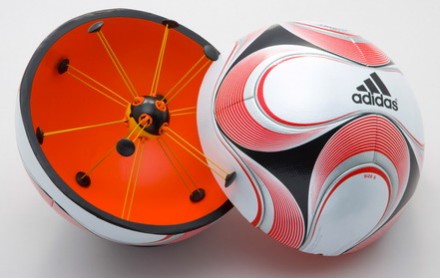
Similarly, such technology could also remove any shadow of a doubt whether the ball stayed in or went out of bounds and who it went off of, ending complaints about whose throw or corner it was. But most importantly, this same tech could finally inform the referees that this was a goal and this was not.
This technology is entirely feasible, too. A company called Cairos Technologies has been developing a system like this for nearly 10 years and had even tested it at the 2005 FIFA U-17 World Cup and the 2007 FIFA Club World Cup. With a few tweaks, the company’s Goal Line Technology (GLT) system could easily be implemented in time for the next major tournament. Alternatively, a new GPS and RFID system could be developed between now and then.
Fit As Butcher’s Dogs
Despite the fact that concerns about referee fitness by fans and coaches are largely overblown, there is possibly a legitimate concern at the heart of this criticism. The breakneck pace of the modern game, aided by modern fitness techniques and those ugly purple and orange Nike boots, makes it difficult for some referees to keep up.
Given the widespread nature of tech in training for players, it’s somewhat shocking that similar techniques haven’t been used among referees. If AC Milan’s physio staff are able to determine whether players will suffer leg injuries by filming their vertical leaps, and Arsenal coach Arsene Wenger is able to monitor his players’ diets by looking at their bloodwork, is it too hard for the referees to receive immediate feedback on their work rate and fitness?
Hardly. Tracking these stats is pretty simple, too. Cairos Technologies, the same company that partnered with Adidas to create the GLT system, have created a real-time stats collection program. It tracks the position of all players on the pitch, as well as the ball. With a little bit of tweaking, the system could be used to give feedback about the referee’s positioning and fitness.
The referees should also examine this type of data for the teams that they are about to referee. Indeed, some of the more successful FIFA referees swear by this technique. Frank De Bleeckere, who has been slated to referee the crucial clash between the United States and Algeria, has been watching footage of both teams to help his positioning. With more aggressive data collection to create heat maps and similar tools, referees like De Bleeckere will have an even easier time calling their matches.
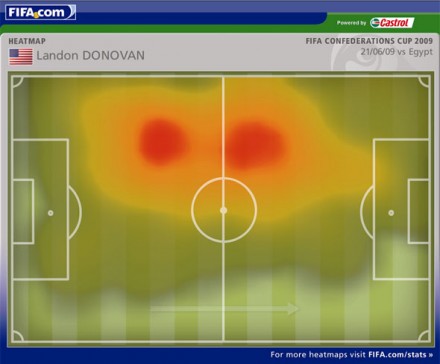
The Height of Fan Technology: The Vuvuzela Hat

So where does this leave us? Can technology solve every problem in football? No, not by a long shot. The game still requires an experience referee to call fouls correctly and to assess advantages. However, technology can certainly help with the more difficult calls.
Sure, Sepp Blatter and FIFA tried to shelf some of these technological reforms in early 2008, citing big costs. However, after a series of costly blunders on a world-wide stage, FIFA can’t afford to wait any longer. They must help pare some of the human error out of the refereeing equation.
Thanks to Gizmodo for the Vuvuzela hat picture. Thanks to Engadget for the CNN Foursquare World Cup badge.
Get the TNW newsletter
Get the most important tech news in your inbox each week.




